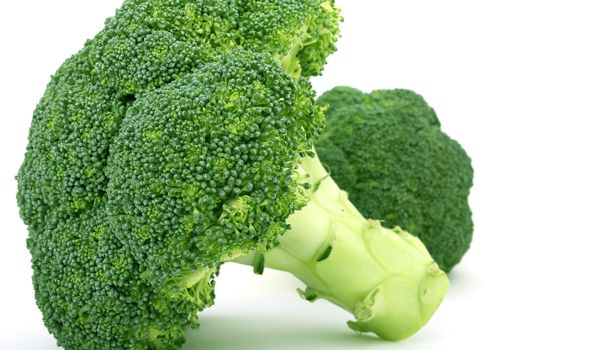
A byproduct of a chemical found in broccoli could prevent acute radiation poisoning, new research suggests.
The compound — which is derived from broccoli, cabbage and other cruciferous vegetables — prevents rats exposed to lethal doses of radiation from dying. If follow-up studies show the treatment works in humans, the compound could be given to people before or right after nuclear exposure to mitigate acute radiation sickness.
Insights from the research could also help to lessen the side effects of radiation therapy in cancer patients by making healthy cells, but not cancer cells, less susceptible to damage from radiation, said study co-author Dr. Eliot Rosen, a radiation oncologist at Georgetown University in Washington, D.C. [Top 10 Cancer-Fighting Foods]
Deadly effects
When people are exposed to high doses of radiation, such as that resulting from a nuclear meltdown or a dirty bomb, their bone marrow stops producing enough cells to fight infection or produce blood clotting. Heavy radiation also strips the gastrointestinal tract, making people prone to inflammation and infection. At high enough doses, both ailments can be lethal.
Past work had shown that a compound derived from broccoli, called 3,3'-diindolylmethane (DIM), showed promise as a cancer-preventive agent, possibly because it boosts DNA repair. Rosen and his colleagues wondered whether these same properties might help shield cells from the DNA damage caused by radiation from a nuclear meltdown or a dirty bomb.
To find out, the team exposed 40 rats to a dose of gamma-ray radiation that would normally be deadly and gave half of them a dose of DIM 10 minutes later. Whereas all of the untreated animals died, 60 percent of the DIM-treated animals survived for more than 30 days.
Sign up for the Live Science daily newsletter now
Get the world’s most fascinating discoveries delivered straight to your inbox.
After 30 days, animals typically will not die of acute radiation sickness; however, the researchers didn't study the animals that long, so it's possible that the animals could die from cancers that take years to develop, Rosen said.
"But, in the case of a nuclear disaster, you're not really worried about someone who is going to get cancer from the radiation 10 or 20 years down the line; you're worried about their acute survival in the immediate weeks following," Rosen told LiveScience.
In follow-up experiments, the team found that waiting longer to administer DIM reduced the chance of survival. When it was given prior to radiation exposure, the compound also shielded rats from radiation's effects.
More work
In a second set of studies, the team showed that human breast-cancer cells dosed with DIM were still susceptible to the effects of radiation, raising the possibility that DIM could shield patients' healthy cells while still allowing radiation to kill cancer cells. DIM's preferential effects in healthy tissue could reduce the side effects of radiation therapy.
"It's a very interesting and surprising result because of the whole body protection from radiation," said Gary Firestone, a molecular biologist at the University of California, Berkeley who studies DIM but was not involved in the work.
Clinical trials are needed to test the compound's effectiveness in humans, Firestone told LiveScience. Such trials should be relatively easy, as DIM is approved for human use and is currently available as a nutritional supplement.
In addition, the researchers used a line of breast-cancer cells that is already slightly resistant to the effects of DIM, so follow-up studies should show whether it works in other cell lines, Firestone said.
The findings were published today (Oct. 14) in the journal Proceedings of the National Academy of Sciences.
Follow Tia Ghose on Twitter and Google+. Follow LiveScience @livescience, Facebook & Google+. Original article on LiveScience.

Tia is the managing editor and was previously a senior writer for Live Science. Her work has appeared in Scientific American, Wired.com and other outlets. She holds a master's degree in bioengineering from the University of Washington, a graduate certificate in science writing from UC Santa Cruz and a bachelor's degree in mechanical engineering from the University of Texas at Austin. Tia was part of a team at the Milwaukee Journal Sentinel that published the Empty Cradles series on preterm births, which won multiple awards, including the 2012 Casey Medal for Meritorious Journalism.











